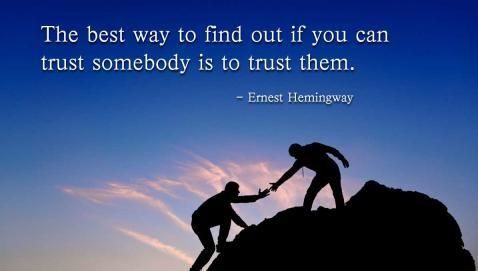
June 17, 2021
People Don’t Really Want Storytelling in Business
If the story of Star Wars were to be told in business, it would begin like this, “Darth Vader is Luke Skywalker’s father! Let me show you how we get there.”
Let me explain. A client of mine recently received feedback that they need to be a better storyteller. In my opinion, this feedback is terribly mislabeled. As a general rule, storytelling doesn’t have much use in business. Good stories are defined by suspense, surprise rabbit holes, and unexpected twists. That may be entertaining, but in business – people don’t want to be surprised, led astray, or feel like they are waiting too long for key information. They want you to get to the point.
People frequently say they appreciate when leaders are good storytellers. What they really mean is they want to be engaged, interested, and maybe even entertained a little by what you’re saying. They also want you to get to the point. To be clear. To avoid the circuitous route, and extraneous details that often seem more like rambling than presenting a powerful story.
So, to adapt the merits of storytelling to the business world, be upfront about your conclusion instead of taking your listeners on an entertaining journey that leaves them trying to figure out what your point is. I’ve watched (and I bet you have too) so many presenters go on and on with context, and caveats, and background, and people in the audience are practically begging them for the point. Alternatively, begin with the end. Once you set the stage with the key takeaways, then fill in additional relevant data, add the contextual detail, and share the potential consequences slowly through the course of your conversation or presentation.
In cinema, we like to wonder where the narrative is taking us. We enjoy watching the story of Luke Skywalker unfold and revel in the shock and surprise of his father’s identity. But in business, you do not have the luxury of keeping the attention of your audience for hours at a time while they wait for the big reveal. In fact, it’s just the opposite. Your “story” begins with the big reveal. That is what pulls them in and gets their attention so you can share all the relevant details. This way, you are still telling a story, just in a more upfront and efficient manner that caters better to business.
Don’t Let Your Progress Be Derailed by Too Much Inspection
It is a classic case of “too much of a good thing isn’t always a good thing.”
I work with a manufacturing company that is tracking a lot of sales metrics. In fact, the company is swimming in KPIs, scorecards, and every imaginable reporting statistic. What’s happening is an overabundance of reporting that is actually slowing down performance. It’s kind of like stopping to check the levels of gas in your tank and your MPG every 15 miles. I’ve observed plenty of leaders who establish a cadence of management “check-ups” that occur at intervals where very little changes between one meeting to the next.
Here’s the thing: sales leaders, sales managers, and sales staff live and breathe numbers. Did you make your numbers? Will you fall short? How much do you think you can sell next quarter? And on and on. As a result, a remarkable amount of time and energy is spent on gathering, inspecting, and reporting numbers that are, quite frankly, out of the control of any sales leader.
During my days as an executive vice president for sales, I spent countless hours reviewing, examining, and analyzing the sales forecast for my company. I required the managers who reported to me to do the same. And that’s what they asked their reps to do, too. We weren’t alone. Instead of focusing on the sales metrics that leaders should be tracking, we found ourselves encumbered by spending 80 percent of our time on reporting sales data and business results that were either out of our control or had already occurred.
The reality is, so much preparation goes into all of the reporting, and it’s largely invisible work that executives don’t even know occurs. If you are doing evaluation or reporting on a weekly basis, you are very likely going to slow down your progress and frustrate your people. Remember, you can’t do it all, and do it all well. Too much inspection is not a good thing, especially if it’s holding you back from focusing on the metrics that you can actually influence.
Current Read:
“Beer Mode and Coffee Mode”
All work is not created equal. In this article, the author suggests that there are two ways to approach work, open mode and closed mode. Open mode is geared towards innovation and creativity and closed mode is driven by focus and productivity. He refers to these two approaches as beer mode and coffee mode. While traditional productivity advice tends to focus on coffee mode (tune out distractions, focus on your to-do list), it doesn’t give space to appreciate the value of beer mode and the role it plays in fostering innovation. Read more to explore the merits of both modes and understand the benefits of implementing both of them into the way you approach your work.
Quotable:


